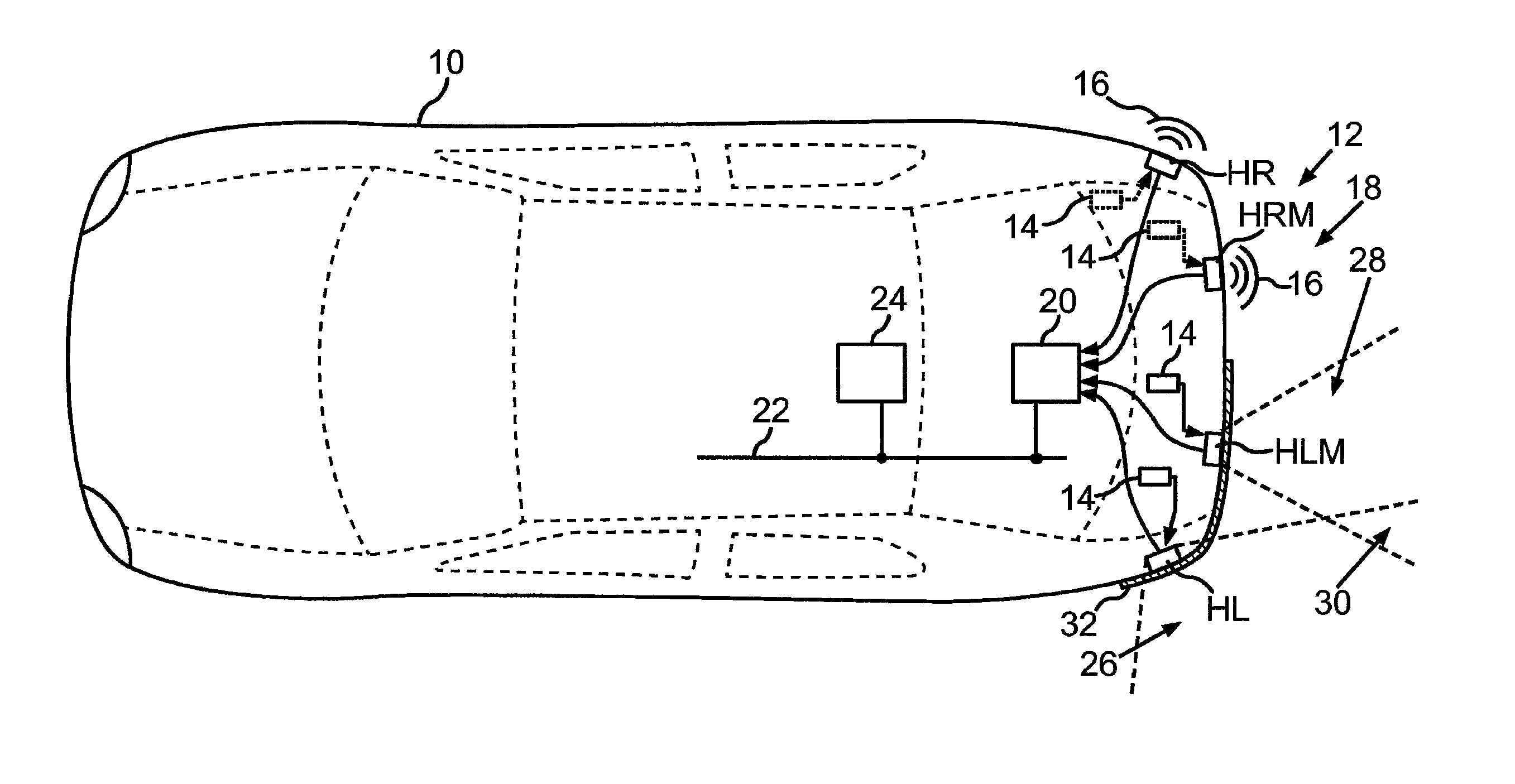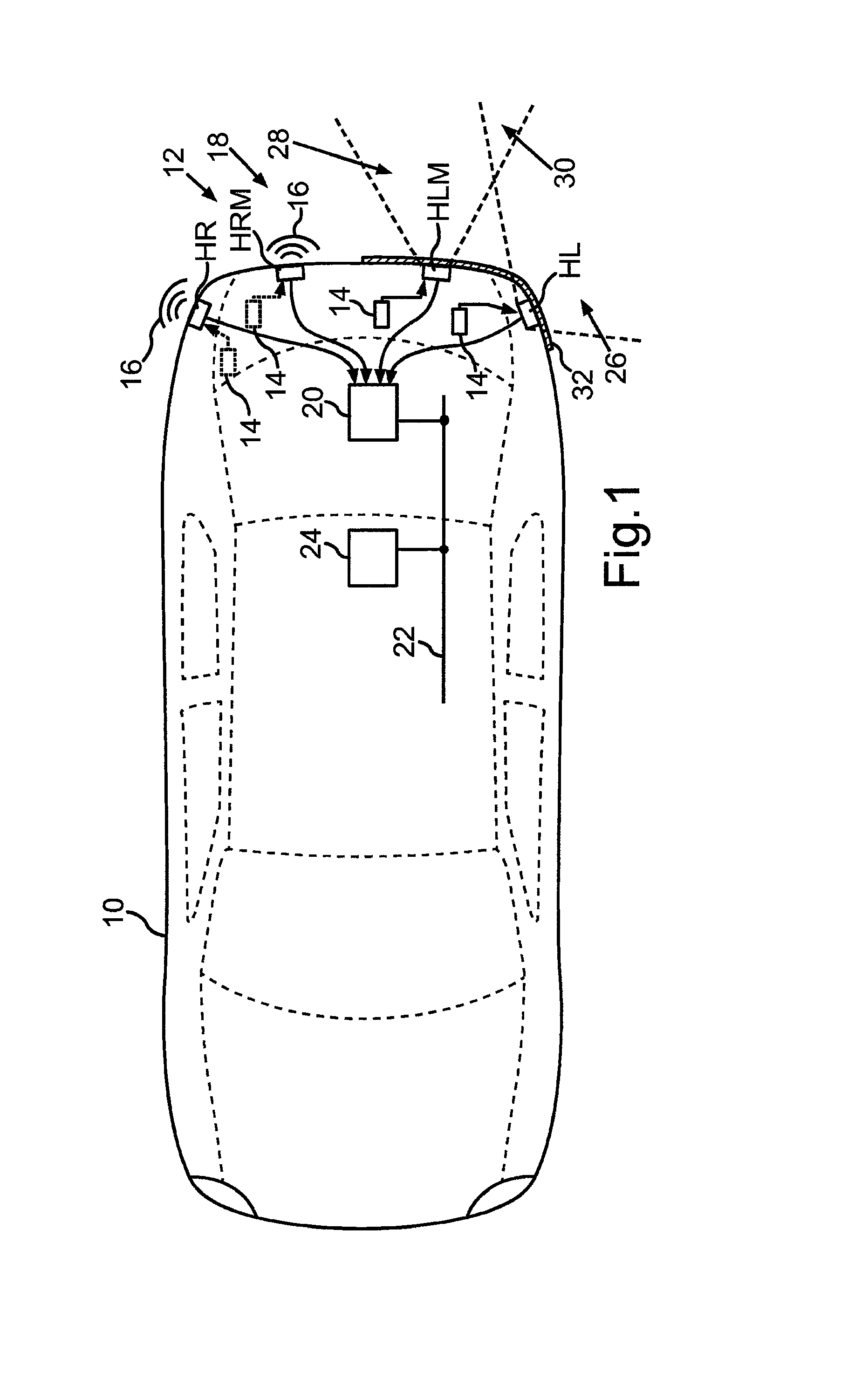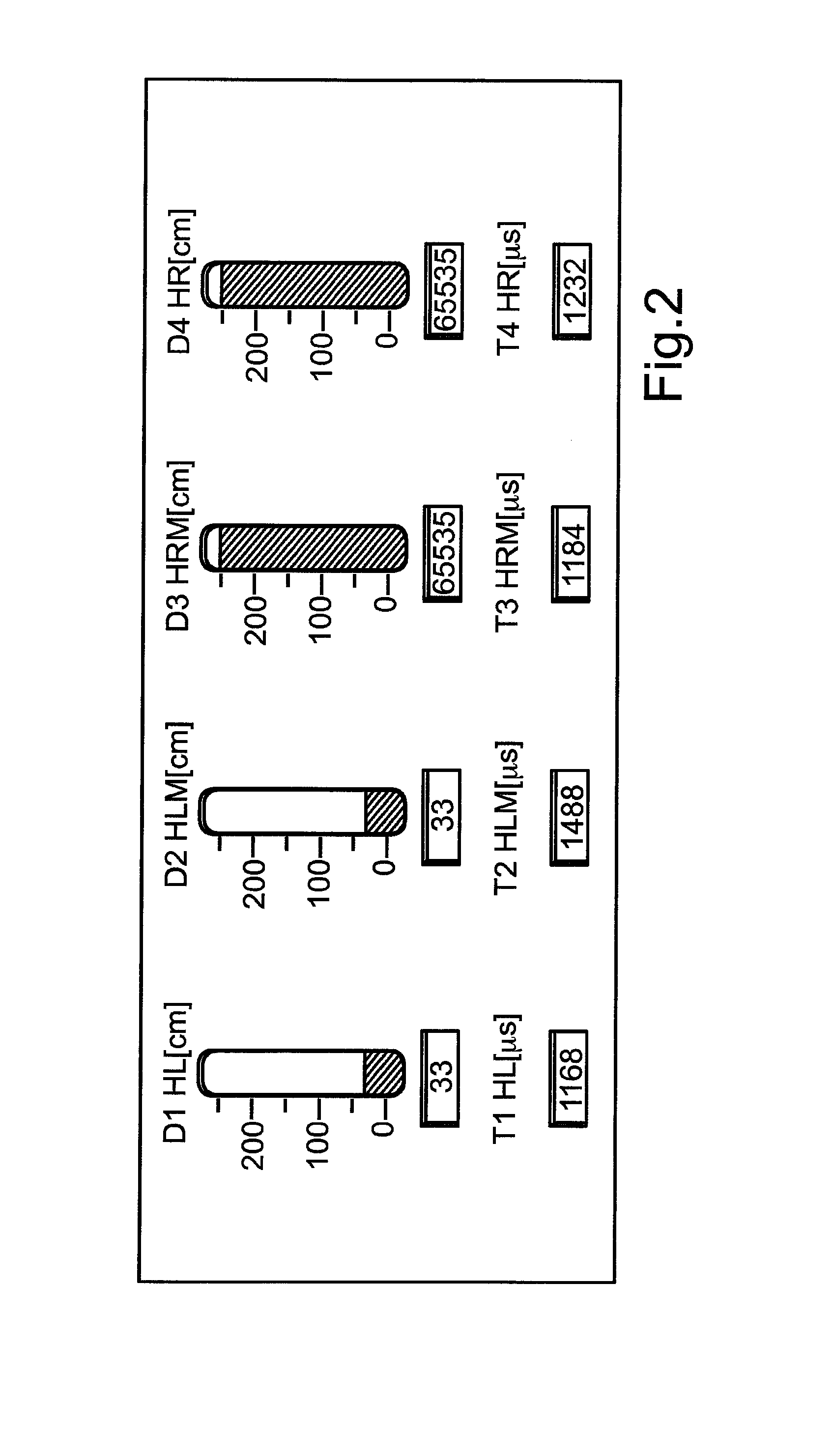Motor Vehicle Having Occlusion Detection for Ultrasonic Sensors
a technology of ultrasonic sensors and motor vehicles, which is applied in the direction of instruments, measurement devices, and using reradiation, can solve the problems of occlusion detection of ultrasonic sensors based on a prolonged decay time, and affecting the accuracy of ultrasonic sensors
- Summary
- Abstract
- Description
- Claims
- Application Information
AI Technical Summary
Benefits of technology
Problems solved by technology
Method used
Image
Examples
Embodiment Construction
[0033]In the exemplary embodiment explained in the following, the described components of the embodiment represent features of the invention that in each case are to be considered individually and independently of each other, and that in each instance likewise further refine the invention independently of each other, and therefore are also to be regarded individually or in a combination other than that indicated as component of the present invention. Moreover, the embodiment described may also be supplemented by further of the features of the invention already described.
[0034]FIG. 1 shows a motor vehicle 10 from a bird's-eye view; for instance, it may be an automobile, particularly a passenger car. In a tail end 12 of motor vehicle 10, e.g., in a bumper, ultrasonic sensors may be disposed that are denoted in FIG. 1 according to their placement as right rear “HR”, right rear center “HRM”, left rear center “HLM” and left rear “HL”. Ultrasonic sensors HR, HRM, HLM, and HL may be part o...
PUM
 Login to View More
Login to View More Abstract
Description
Claims
Application Information
 Login to View More
Login to View More - R&D
- Intellectual Property
- Life Sciences
- Materials
- Tech Scout
- Unparalleled Data Quality
- Higher Quality Content
- 60% Fewer Hallucinations
Browse by: Latest US Patents, China's latest patents, Technical Efficacy Thesaurus, Application Domain, Technology Topic, Popular Technical Reports.
© 2025 PatSnap. All rights reserved.Legal|Privacy policy|Modern Slavery Act Transparency Statement|Sitemap|About US| Contact US: help@patsnap.com



